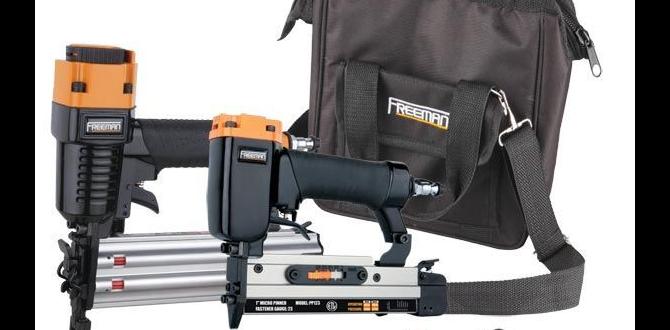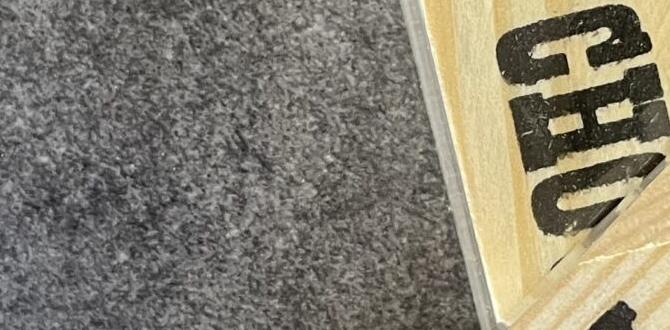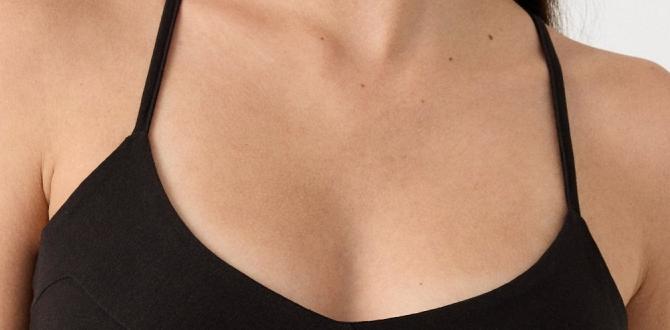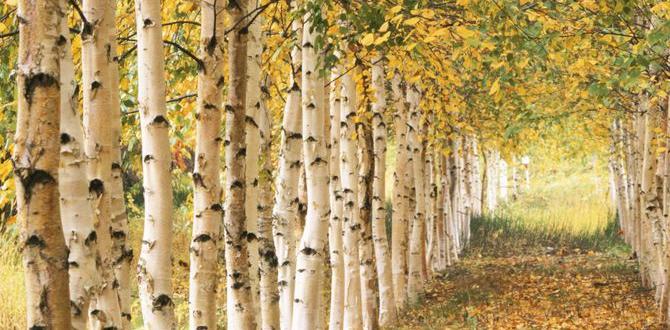Imagine stepping into your home and feeling the warmth of natural wood under your feet. Now, picture this wood coming from reclaimed sources instead of new trees. Reclaimed wood flooring is not just beautiful; it tells a story and helps the environment. But what happens to this unique flooring in humid climates?
If you live in a tropical area, you might worry about how humidity affects wood. Excess moisture can cause wood to warp or develop mold. That’s a real concern for many homeowners. Yet, reclaimed wood flooring can still shine in these tough conditions. But how?
Choosing the right type of reclaimed wood can make all the difference. Some woods adapt better to humidity than others. Plus, with a little care, you can keep your reclaimed wood flooring looking great. Get ready to dive into the exciting world of reclaimed wood and discover how it thrives even in humid climates!
Table of Contents
Reclaimed Wood Flooring In Humid Climates: A Smart Choice Reclaimed Wood Flooring Offers A Unique Blend Of Aesthetics And Sustainability, Making It An Excellent Choice For Homeowners. However, When Considering This Option For Humid Climates, There Are Certain Factors That Come Into Play. Here, We Delve Into Why Reclaimed Wood Flooring Is Ideal For These Environments And How To Maintain Its Beauty And Integrity Over Time. Benefits Of Reclaimed Wood Flooring 1. **Sustainability**: Reclaimed Wood Is Harvested From Old Structures, Reducing The Need For New Lumber And Minimizing Environmental Impact. 2. **Character And Style**: Every Piece Of Reclaimed Wood Comes With A Unique History, Adding Character And Charm To Any Space. 3. **Durability**: Often Sourced From Old-Growth Trees, Reclaimed Wood Is Typically Denser And More Durable Than Modern Timber. Challenges In Humid Climates While Reclaimed Wood Has Many Benefits, It’S Essential To Understand How Humidity Affects Its Performance: 1. **Expansion And Contraction**: Wood Naturally Expands In Humid Conditions And Contracts When It Dries. This Movement Can Lead To Gaps Or Warping If Not Properly Managed. 2. **Mold And Mildew**: High Humidity Can Promote The Growth Of Mold, Which Can Affect Both The Wood And Indoor Air Quality. How To Maintain Reclaimed Wood Flooring In Humid Climates 1. **Acclimate The Wood**: Before Installation, Allow Reclaimed Wood To Acclimate In Your Home For A Few Days To Minimize Movement Post-Installation. 2. **Use A Vapor Barrier**: Installing A Moisture Barrier Beneath The Flooring Can Help Prevent Water Damage And Inhibit Mold Growth. 3. **Regular Maintenance**: Keep The Wood Clean And Dry. Use A Humidifier During Dryer Months And Ensure Proper Ventilation To Keep Air Circulation Good. 4. **Sealing**: Applying A High-Quality Finish Can Create A Protective Layer, Helping To Resist Moisture And Stains. Conclusion Reclaimed Wood Flooring Can Be A Stylish And Sustainable Option For Your Home, Even In Humid Climates. By Taking The Right Precautions And Practices, You Can Ensure That Your Reclaimed Wood Flooring Remains Beautiful And Functional For Years To Come.
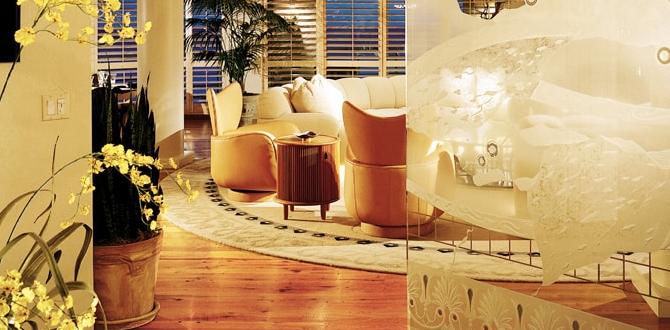
Reclaimed Wood Flooring in Humid Climates
Reclaimed wood flooring offers a unique charm for homes. But is it suitable for humid climates? The good news is that reclaimed wood can adapt well to moisture. It is often dried and treated to withstand changes in humidity. Using planks from old barns or factories gives each room character. However, always check for proper installation. This ensures that your beautiful floor lasts even in humid conditions. Imagine the stories each plank can tell!
Understanding Reclaimed Wood Flooring
Definition and benefits of reclaimed wood flooring. Common sources of reclaimed wood materials.
Reclaimed wood flooring comes from old wood that is reused. It often comes from buildings, barns, or furniture. This type of flooring is special because it helps the environment by saving trees. It adds character to homes with its unique patterns and colors. Some benefits of reclaimed wood flooring include:
- Eco-friendly: Reduces waste.
- Durable: Often stronger than new wood.
- Beauty: Unique and charming appearance.
People love reclaimed wood for its history and style, making any room feel warm and inviting.
What are common sources of reclaimed wood?
Common sources include old barns, factories, and even wine barrels. These materials have stories and character, adding magic to your home.
Why Humidity Matters for Wood Flooring
The effects of humidity on wood expansion and contraction. Importance of proper acclimatization before installation.
Humidity can change how wood floors behave. Wood expands with wet weather and contracts when it’s dry. This movement can cause gaps and warping, which looks bad! Before installing reclaimed wood flooring, it’s very important to let it adjust to your home’s humidity. This is known as acclimatization. Taking the time to do this helps your flooring stay beautiful. Think of it like a cozy blanket that fits just right!
Why does wood need to adjust to humidity?
Wood is like a sponge. It absorbs moisture from the air. This can make it swell or shrink. If wood isn’t adjusted properly, it can lead to problems like:
- Gaps between the boards.
- Creaking sounds when you walk on it.
- Uneven surfaces that might trip you.
Keep your floor happy by giving it the time it needs!
Choosing the Right Reclaimed Wood for Humid Climates
Types of reclaimed wood best suited for moisture resistance. Considerations for species selection and treatment options.
Choosing reclaimed wood for humid climates can be tricky, like picking the right dessert at a buffet! Some types fare better against moisture. For example, cypress and teak are champions in damp conditions. They resist swelling and warping like pros. Before making a choice, consider how often you’ll clean the flooring and its treatment options. Treatment can add extra defense against humidity, making your wood happy and long-lasting!
| Wood Type | Moisture Resistance | Treatment Options |
|---|---|---|
| Cypress | High | Oil finishes, sealants |
| Teak | Very High | Natural oils, varnishes |
| Pine | Moderate | Stain, sealers |
Installation Techniques for Humid Environments
Recommended installation methods to prevent moisture damage. Importance of proper subfloor preparation and moisture barriers.
To keep reclaimed wood flooring safe in humid areas, use these smart installation methods:
- Prepare the subfloor well to ensure it is clean and dry.
- Add a strong moisture barrier to stop water from ruining the wood.
- Seal gaps to keep moisture out.
- Use a floating installation method to allow for natural wood movement.
These steps help prevent moisture damage and make the floor last longer. A good start can make a big difference!
Why is Subfloor Preparation Important?
Proper subfloor preparation is crucial because it helps the flooring stay secure and dry! A sturdy base stops water from getting to the wood, keeping it in great shape for a long time.
Maintenance Tips for Reclaimed Wood Flooring
Best practices for cleaning and preserving reclaimed wood in humid conditions. How to manage humidity levels in the home to protect flooring.
Taking care of reclaimed wood flooring can be fun, like giving your wood a little spa day! First, use a soft broom or vacuum to clean dust—not a jackhammer! Wipe spills right away; wood hates soggy socks! Keep humidity levels around 30-50%. A dehumidifier can be your flooring superhero here. Floor fans also help! Look out for scratches; a little wax can turn those frowns upside down. Here’s a handy table for quick tips:
| Action | Tip |
|---|---|
| Clean | Use a soft broom or vacuum regularly |
| Moisture | Keep humidity between 30-50% |
| Spills | Wipe them promptly |
| Scratches | Apply a little wax for shine! |
Keep these tips in mind, and your reclaimed wood will stay happy, and you will too!
Common Challenges and Solutions
Identifying potential issues with reclaimed wood flooring in humid climates. Solutions for cracking, warping, and mold growth.
Reclaimed wood flooring can face some tricky problems in humid places. Cracking and warping might pop up like uninvited guests at a party. Mold? Well, it could set up camp if the wood is not cared for. To tackle these issues, homeowners can use a dehumidifier to keep moisture in check and apply sealants to protect the wood. Regular cleaning is key to keeping mold away too. Here’s a quick table to sum it up:
| Issue | Solution |
|---|---|
| Cracking | Use a dehumidifier |
| Warping | Apply sealants |
| Mold Growth | Regular cleaning |
Keeping an eye on these issues is important. Treat your reclaimed wood like a friend; nobody likes a flake! With care, the wood can stay beautiful and strong.
Cost Considerations and Value of Reclaimed Wood Flooring
Pricing factors for reclaimed wood flooring in humid regions. Longterm value and sustainability benefits compared to traditional options.
Choosing reclaimed wood flooring can be a smart move, especially in humid places. Costs can vary based on factors like wood type and supply. Often, this eco-friendly option costs a tad more upfront, like choosing the fancy ice cream over the regular one at the store.
However, its long-term value is pretty sweet. Reclaimed wood lasts longer and helps the planet by reusing materials. Think of it as saving the Earth while flooring your home. Plus, studies show you might save on maintenance costs down the line!
| Pricing Factors | Benefits |
|---|---|
| Wood Type | Durability |
| Condition of the Wood | Sustainability |
| Supply Availability | Long-term Savings |
So, while you might spend a little more at first, you’re making a choice that benefits both your wallet and the environment. It’s like planting a tree; it takes time to grow, but it’s worth it!
Conclusion
In summary, reclaimed wood flooring can thrive in humid climates if cared for properly. You should keep humidity levels steady and clean the floors regularly. It’s a beautiful and eco-friendly choice that adds charm to your space. For more tips on maintaining your flooring, check out articles or guides on wood care. Enjoy your lovely reclaimed wood floors!
FAQs
How Does Humidity Affect The Longevity And Durability Of Reclaimed Wood Flooring In Humid Climates?
Humidity can change how reclaimed wood flooring behaves. In humid climates, wood can absorb moisture and expand. This can cause the wood to warp or get damaged. If you keep the humidity stable, the flooring can last longer and stay strong. It’s good to use a dehumidifier or air conditioner to help.
What Specific Types Of Reclaimed Wood Are Best Suited For Installation In Areas With High Humidity?
For places with high humidity, we want wood that won’t warp or swell. Good choices are teak, mahogany, and cedar. These woods are strong and can handle moisture well. They also look nice and smell great! Make sure to treat the wood, too, to keep it safe.
What Installation Techniques Or Treatments Can Be Applied To Reclaimed Wood Flooring To Minimize Moisture-Related Issues In Humid Environments?
To keep reclaimed wood floors safe from moisture, we can do a few things. First, use a moisture barrier. This is a special sheet that stops water from coming up from the ground. Next, let the wood adjust to your home for a few days before installing it. We can also apply a sealant to protect the wood from moisture. Lastly, make sure your home has good air circulation to keep things dry.
How Can Homeowners Maintain Reclaimed Wood Flooring To Prevent Warping Or Mold Growth In Humid Climates?
To keep your reclaimed wood flooring safe from warping and mold, make sure your home stays cool and dry. Use a dehumidifier to keep humidity low. Clean the floor often by sweeping or vacuuming to remove dirt and moisture. If water spills, wipe it up right away. Finally, keep windows open for fresh air when you can!
Are There Any Specific Signs Of Damage To Look For In Reclaimed Wood Flooring That Might Indicate Issues Related To Humidity?
Yes, you can look for some clear signs. First, check for warping or bending in the wood. If you see gaps between the boards, that could be a problem. Look for dark spots or mold, too. These could mean there’s too much moisture in the air.

